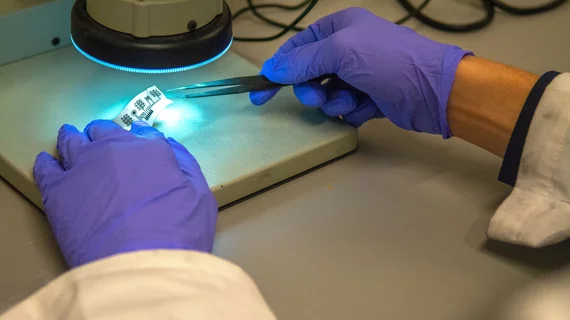New ‘ultra-soft’ wearable device uses ECG, SCG results to monitor heart health
A team of engineers with the University of Missouri is developing a new-look wearable device designed to use simultaneous electrocardiogram (ECG) and seismocardiogram (SCG) signals to monitor a user’s heart. While the ECG results will reflect the heart’s electrical signal, the SCG results will track its vibrations.
The group hopes its efforts can help identify the early warnings signs of heart disease.
“We want to provide comprehensive information about the status of a person’s heart,” Zheng Yan, PhD, an assistant professor in UM’s department of biomedical, biological and chemical engineering and department of mechanical and aerospace engineering, said in a prepared statement. “Effects of heart disease can often happen unexpectedly, so it’s important to have continuous, long-term monitoring for early detection and timely interventions. We want this to help reduce the number of people succumbing to death from heart disease in the United States.”
Yan et al. received a $2.6 million grant from the National Institutes of Health to fund their research. One of the key goals of their work was to build the wearable device with “breathable material” with “antibacterial, antiviral properties.” This is especially important, Yan explained, because a user may wear the same device for weeks at a time. Breathable materials also help make the device comfortable to touch and wear—and ensure it will continue to work when the user sweats.
“Under the microscope, our skin is not flat,” Yan said in the same statement. “So, an ultra-soft material can form what we call a conformal contact, which is very important for us in order to have a high level of accuracy for our signal recording of the electrical activity of the human heart.”
The team’s heart monitor is still under development. Click here for a detailed look at another wearable solution Yan helped design, a “wearable air conditioning” device that monitors heart health, blood pressure and skin hydration.

